-
Posts
98 -
Joined
-
Last visited
Content Type
Profiles
Forums
Gallery
Events
Store
Posts posted by AndrewRyan
-
-
24 minutes ago, howaboutme said:
Are you double checking the Trident's reading with another test kit? Just want to rule that out too.
I did double check more frequently at first with the trident, but now I’m comfortable using it as trend analysis. I’m not too uncomfortable if it’s off a bit from the Hanna (which it hasn’t yet been), just looking for it to stay stable.
-
I’ll try to keep this concise, but as it’s a complicated problem it may be not be easy.
I have a system that is now a little over two months old. I realize it’s very much establishing itself and I also intended going in to use water changes for the first few months to replenish alkalinity and calcium. That said, I did purchase a DOS to go along with my Apex and Trident mowing that at some point dosing would need to take place.
My first batch of Fritz RPM salt was measuring lower in alkalinity than I had hoped for whatever reason (around 7ppm). I decided to raise the alkalinity by initially dosing part 1 of ESV B-Ionic to raise Alk. It worked a treat, brought my Alk to ~8.5 and all seemed good. But then I noticed that not only am but calcium was beginning to drop. Not wanting to be unbalanced I started dosing part 2 as well as part 1 (roughly 50% of dose for part 2 compared to part 1 or 10ml/5ml to start).
However, I have noticed recently that it’s dropping a little more each day and I have adjusted dosing to support this continued drop. I got concerned when I reached twenty ml per day of each wondering if this was normal or if the increased dosing would ever stop.
I have many indicators that point to precipitation being a problem (CO2 scrubber pinning PH from 8.2-8.3, 79-80 degree water temp, etc) and I do see some “build up” along the floor of my sump. However this is generally spread throughout the sump, not just where the dosing lines come in, and I do have a Wrasse which kicks up my fairly fine sand pretty frequently.
I stopped all dosing for a couple days on Wednesday to see what the tank would do and it dropped into the 6s at a pretty steady rate. Calcium dropped to 385 from the 415-435 range I generally wanted to aim for as well.
I guess what confuses me is that I wouldn’t think that I wouldn’t need to dose 20 ml per day of each part in my 2 month old 55 gallon system. I also don’t want to maintain alkalinity less than 7 in my system which apparently requires dosing. I lost roughly .7 dKH per day when I ceased dosing with a corresponding decline in CA.
Its probably helpful to also note that I have been religious with a 10% water change each Sunday so I’m not just relying on dosing. Also helpful to know I have a good deal of LPS coral that has been added to the system, but no SPS. I also don’t see any coralline algae at this point which I know can increase demand.
Grateful for any thoughts.
Sent from my iPhone using Tapatalk
-
On 2/10/2023 at 9:37 PM, Origami said:On 2/10/2023 at 8:10 PM, AndrewRyan said:
Yep. An incomplete nitrogen cycle can deplete alkalinity. There's a unit of alkalinity consumed in the process of converting ammonia to nitrate (by aerobic bacteria). That unit is replaced in the process of converting the nitrate to nitrogen gas (by anaerobic bacteria). Anaerobic bacteria populations grow more slowly than aerobic bacteria, so during cycling, we often see a build up of nitrate. If we perform a water change at this stage (to reduce the nitrate), the alkalinity that was lost will never be replaced.
This is fascinating and something new to me. I think I have heard elsewhere that once ammonia and nitrite levels bottom out and you detect nitrate levels in the system you should perform a large water change and then begin your regular interval water changes. I currently have undetectable ammonia and nitrite (Salifert) and 20 ppm nitrate (Hanna). But if I’m reading correctly, you are saying that I should hold off while the anaerobic bacteria begin the process of turning nitrate into nitrogen gas? If I do a large water change now I would be hindering that process? And if I allow that process to occur alkalinity will naturally be restored in the system? This is very cool stuff, please let me know if I have captured your input correctly.
I measured calcium and magnesium in the tank with Hanna kits. Calcium comes in at 430 ppm and magnesium at 1485.
-
Or just wait until I have corals down the road… as you have suggested.
Sent from my iPhone using Tapatalk -
The cycling process lowers alk so as the tank matures that effect will be minimized and you'll go to monitoring alk as a result of coral consumption, etc....
I'd leave it alone. Start monitoring it when you have corals. Then decide what to do.
I did not know the cycling process lowers alkalinity, but that explanation makes sense with what I’m experiencing. I am through the cycling process at this point, so I’ll do a 50% WC this weekend I suppose and see what dKH looks like a week down the road from then. Thanks.
Sent from my iPhone using Tapatalk -
I have been using Fritz RPM salt mix recently and testing my alkalinity today I got 6.6 (3 times) with the Hanna checker. I tested my saltwater in storage and it came up as 7.7, which is closer to the 8-9 dKH that Fritz touts as the range for 35ppt, but it is still below. Is there something I am missing here? I don’t have any corals yet and likely won’t for some time, but I can imagine it’s not good to have low and, even worse, inconsistent dKH when I do have livestock in the system.
Maybe this batch is mixing up at 7.7 or so (which isn’t terrible), if that’s the case is it normal to have a 1dKH drop over two weeks with two ~10% water changes during that time?
-
Well, this is silly but I feel like I owe a follow-up. This was not Cyano, but tiny specs of the purple covering on the Caribsea Liferock. I’m 99% sure.
-
-
Well… I think I figured out what I did wrong. The leading box holes were directly over the pump outlet instead of rotated away. When I turned them to where there was no holes directly above the outlet it made a world of difference. Now, I may actually have to lower the stand again. Turned to MIN the bubbles are breaking at the neck line now.
Sent from my iPhone using Tapatalk -
Just so you know, the reason I mentioned filter socks is that years ago, when a bunch of us would wash them for reuse, our skimmers would go bonkers for a couple of days. The foaming would be just nonstop like you'd get with some additives or treatments, Chemiclean being one of them. Back then, I would just pull the cup and let the skimmer overflow for a couple of days, by which time things often settled.
That’s interesting. I had read new filter socks will cause issues if you don’t rinse them due to manufacturing process, but I wouldn’t have thought washing a used one would… unless maybe some sort of detergent was used?
I’ll probably have a similar issue when I change out my filter floss.
Sent from my iPhone using Tapatalk -
are you sure that the "MAX" label on the skimmer output valve pipe is marked correctly? What happens if you try other positions of that adjustment?
Looks to me like the skimmer is working great and making piles of foam, it just isn't letting you set the water level low enough.
I did play with the adjustments. MAX give me the least worst outcome. It’s producing a lot actually, just need to let it settle maybe? I have it sitting on an adjustable acrylic Frag rack as a stand so I raised it up as high as it goes (gives maybe 6” of water the skimmer sits in) and that was a marked improvement. Still foam spilling over but at a much less dramatic rate. Just going to leave this thing open for a few days and see what happens. With no life depending on me at this point it’s just a fun project. Type II fun at times but fun, nonetheless.
Sent from my iPhone using Tapatalk -
You've got a lot of foam there. Have you recently installed newly cleaned filter socks or added any sort of additives or treatments that might temporarily increase foaming? If that's the case, it can take a few days for things to settle.
Ha, it just keeps coming! No new filter socks. I am using filter cups actually and floss, but the floss has been in a few days. No to additives either. I am actually going out of town for a few days starting tomorrow so I guess I’ll just let it run it and see what it looks like when I get back.
The last (and only other) protein skimmer I set up was actually remarkable in ease of break in. It was cheaper too, now I’m wondering why I just didn’t go back to it.
Sent from my iPhone using Tapatalk -
4 minutes ago, howaboutme said:
I didn't see the video (I suggest you upload it to youtube, imgur, etc and then add the link here) but a lot of skimmers will overflow if you have it wide open. Why don't you just run it at a setting where you can just get the bubbles to be just below the cup? You don't have any bioload so you won't get much real skimmate.
I’ll add a few pictures and see if that helps illustrate.
when I say it’s wide open I mean I have the water level in the skimmer as low as it will go (fully open) and I have raised the skimmer well above suggested in sump water level (suggests 9.5” and it’s about 7” with stand).
Right now I have it draining back to the tank in hopes that it’s just normal break-in.
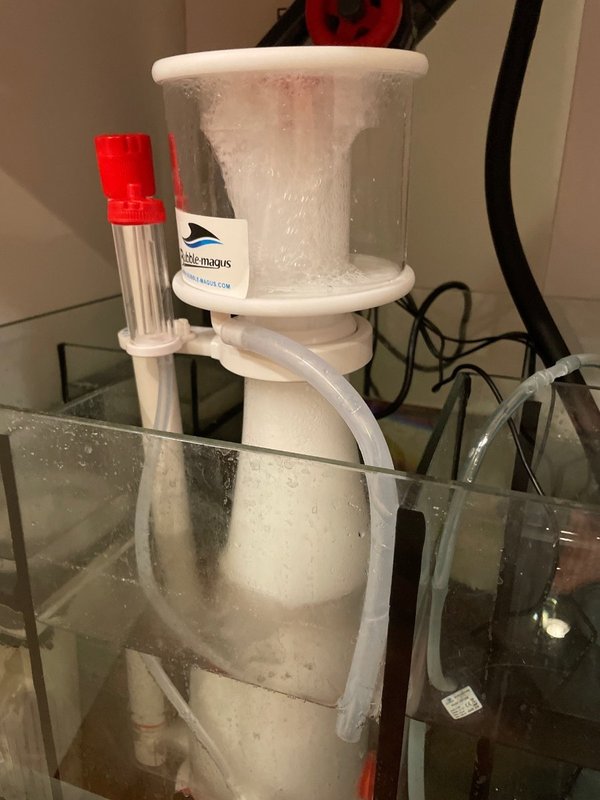
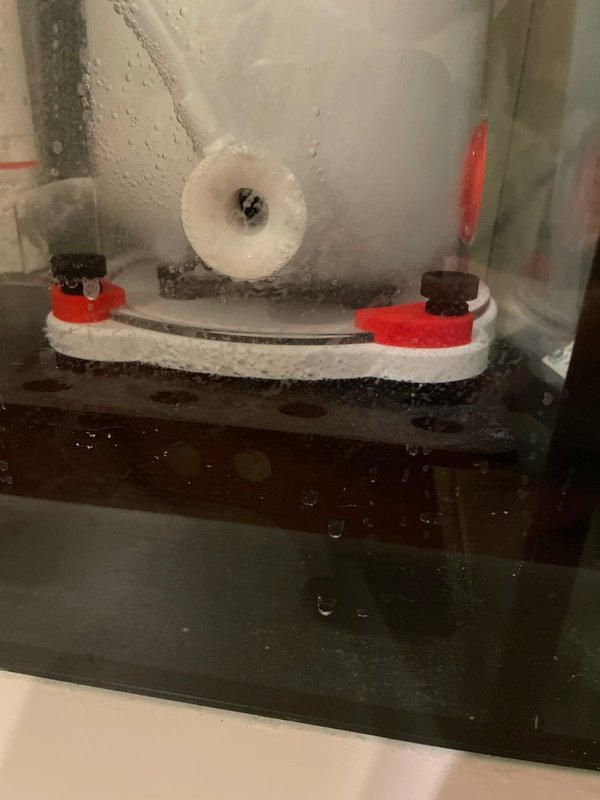
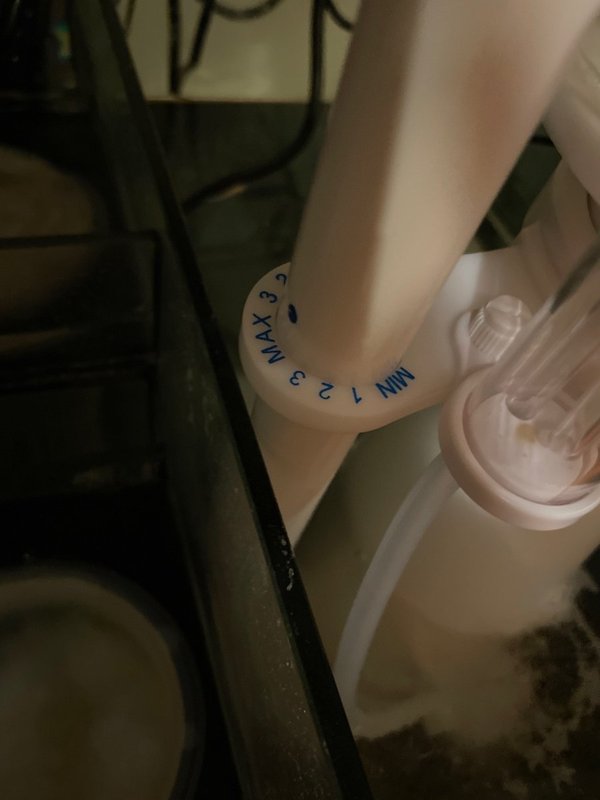
-
It’s a Bubble Magus Curve 5, it’s on a skimmer stand raising it to 7” water depth, it’s fully opened to max, and it’s already run overnight once previously. Not sure what I’m missing, other videos of skimmers being run the first day don’t seem to be pouring water out of the top with a flood of bubbles coming from the bottom. You can’t even see the pump.
Sent from my iPhone using Tapatalk -
This is after I put the red cap in on the side thinking that might help. Is this just normal break-in?
-
Any concerns with how this skimmer is looking? Recently setup and I know to expect some micro-bubbles but this seems excessive to me.
It’s creating some serious churn on top of the water, as well.
-
Also, you mentioned about adding flow. Adding flow doesn't solve the cyano problem. It just keeps things suspended in the water column for it to be filtered out. I do think that the tank will want another PH to get some mixed flow patterns.
That’s interesting, I had heard that low flow sections of the tank will be more time to cyano accumulation. Manual removal, water changes… anything else to consider if it gets out of hand?
Sent from my iPhone using Tapatalk -
Ha! It's hard to say, but it's backing off in the dark like it's cyano. If you jumpstarted your cycle with some product and it was dosed in excess of what any existing bacteria required, then it may have provided just enough for cyano to get started. Early in the hobby, we sometimes would start a tank using live rock and, through a process of monitoring the ammonia levels and big water changes, would keep the ammonia levels below 1 ppm peak. This was both to prevent a cascading die-off and to foster the development of a large number of aerobic bacteria (responsible for converting ammonia to nitrate). The anaerobic bacteria would then follow, but on a longer time scale.
At this point, it may be worth it just to watch the tank a few days and, if you're dosing anything, maybe let up a bit. If you want to, you can wrap the tank in a blanket to further restrict the light, giving a chance for the bacteria to further develop. If you don't have any macro-life in the tank yet, you can try pushing the temperature up while shading the tank - that might speed up bacteria multiplication, too. But waiting and watching nature take its course is often the first course of action when the situation is not an emergency.
I’m going to go with the “watch and wait” course. At this point, nothing is in danger and it’s interesting enough to watch something happening in the tank. I’m realizing it’s easier to rule out what didn’t happen then decide conclusively what did.
Thanks for weighing in!
Sent from my iPhone using Tapatalk -
-
Kind of odd to have cyano so early considering how you started the tank. I'm wondering if something in Fritz Turbostart or Fishless Fuel is contributing....
It is odd. I have one pump on the other side of the tank (which has clean sand) so I’m hoping adding another Nero 3 and the resulting flow will help. Given it’s a 2x2 tank, I was thinking one pump would suffice but I’ll be happy to have the flow options that come with two pumps.
Sent from my iPhone using Tapatalk -
Try taking a look first thing in the morning.
Sent from my Note 10+5g using Tapatalk
Will do.
Sent from my iPhone using Tapatalk -
New rock and new sand would make diatoms likely. But your pics show purple red on the sand like cyanobacteria. If you turn the lights off, does it disappear overnight? That would lean more toward cyanobacteria.
Sent from my SM-N976V using Tapatalk
I don’t have any lights on currently, other than ambient room lights during the day.
Sent from my iPhone using Tapatalk -
18 minutes ago, Origami said:
New rock or old?
It’s new rock (Carib Sea “Live”).
19 minutes ago, Origami said:Most of the time, diatoms will take on a golden to dark brown sort of look, but sometimes they can have a slightly reddish-brown tinge to them.
I took some pictures to aid diagnoses. I agree, whatever it is I’ll let it grow out and remove. Not overly concerned, just doesn’t comport with my, albeit limited, understanding. No lights, nothing introduced, and only 7 days in…
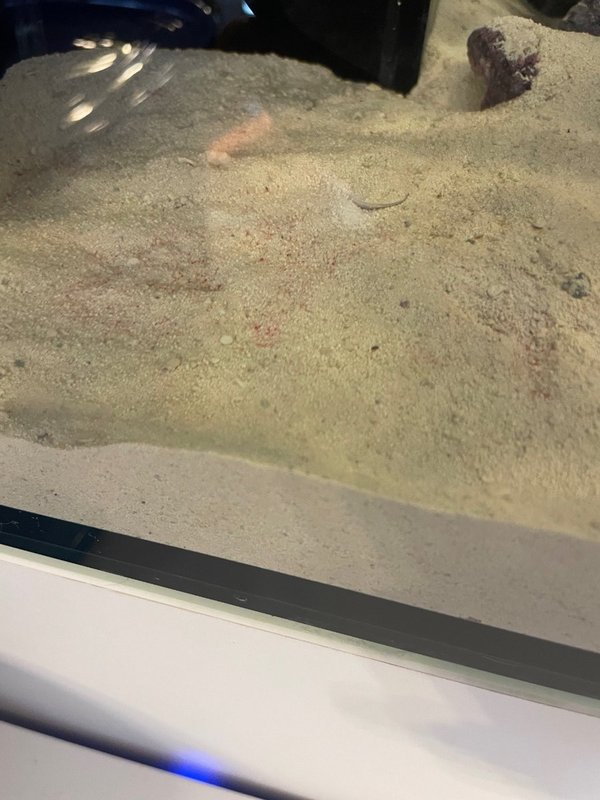
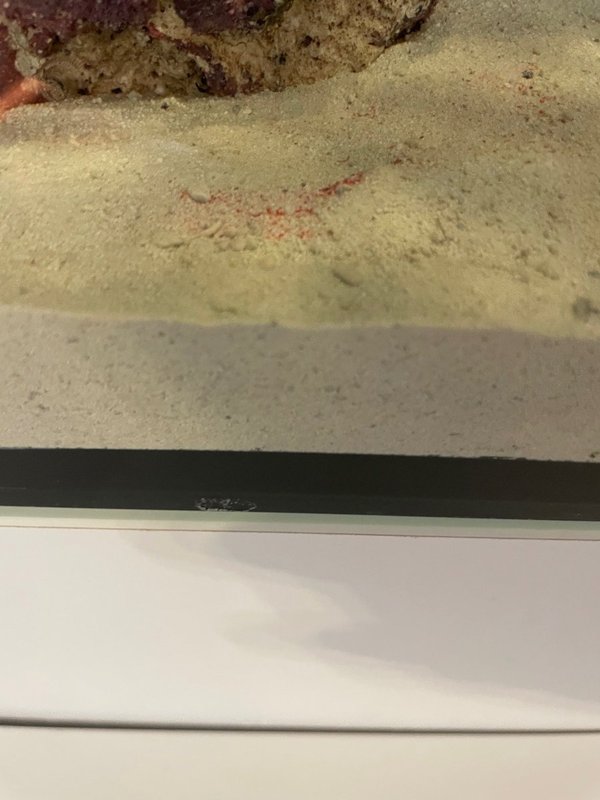
-
When it comes to diagnosing algae/bacteria, I’m always willing to consider I have misdiagnosed but this looks a lot like the very earliest stages of Cyano from previous interaction.
As far as where it was introduced, I’m have no clue. The only thing I can think of that was introduced wet was Ocean Direct sand.
I’ll add some more flow to the tank and manually remove any more that pops up. I don’t think it’ll be an issue, just surprised to see it so early given the status of the tank.
Sent from my iPhone using Tapatalk




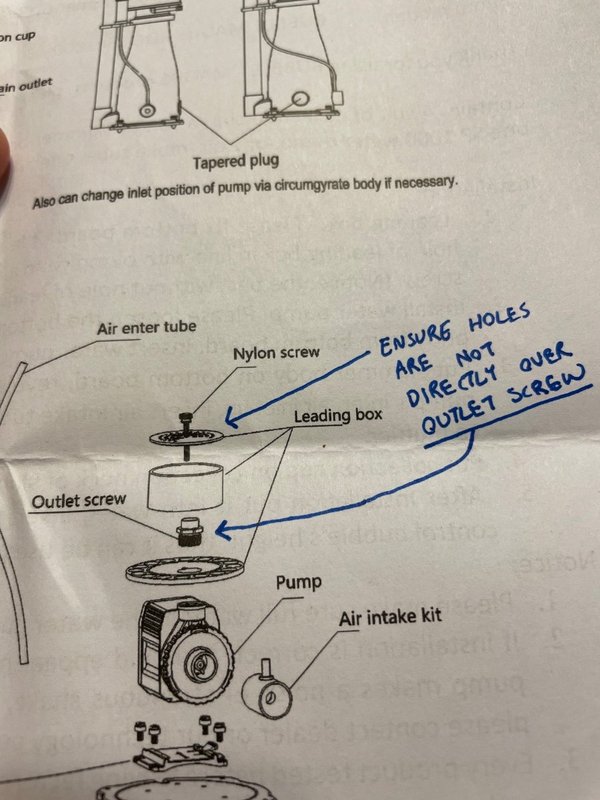
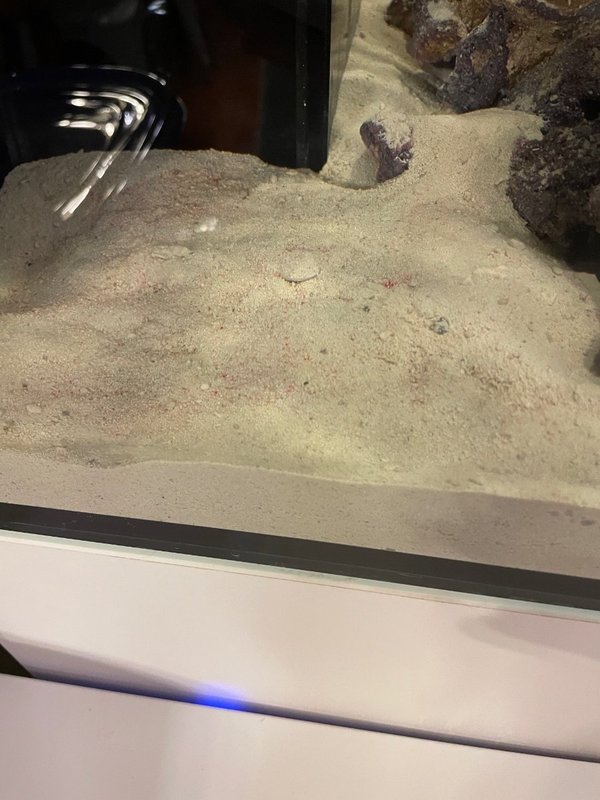
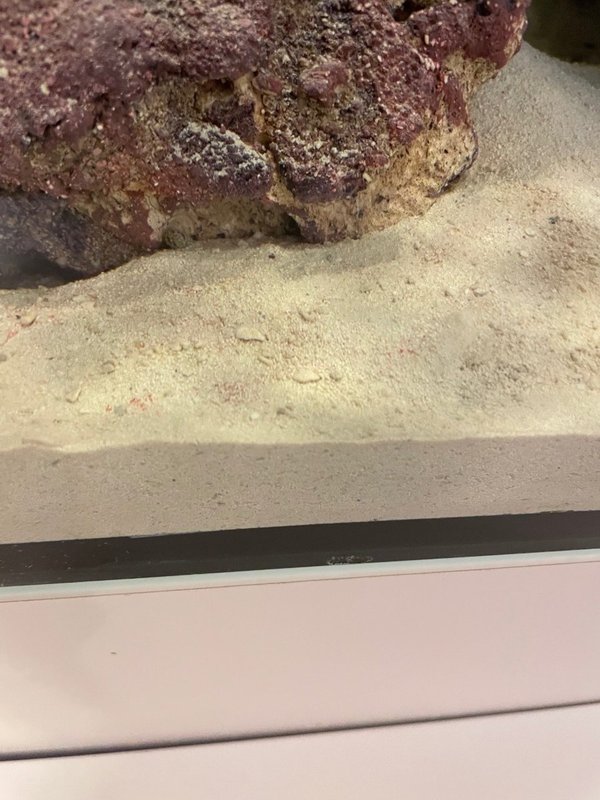
Reef Chemistry
in New to the Hobby
I have my salinity pegged at 1.026 or 35 ppt and that’s what I mix the salt at. Magnesium actually started to drop a bit at one point as well (not much) but I dosed it back to ~1350 which is where I have been keeping it plus or minus 20-30 or so. I have actually heard that all magnesium tests have a +/- of 150 so I just try to keep it reading roughly the same.
The 2 parts are set up to dose at least 5 minutes apart and these are really small micro doses throughout the day with the DOS. I don’t have a power head in the sump but both lines are run into the baffle between skimmer chamber and return so there’s adequate flow there.